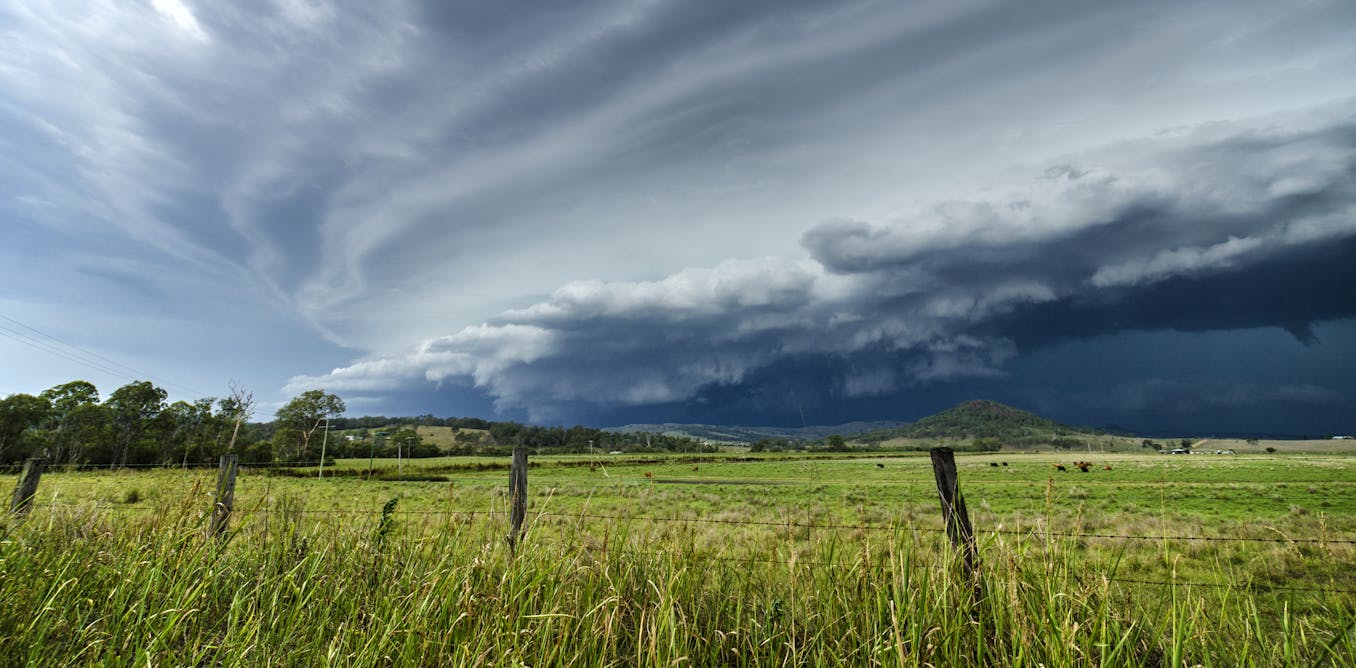Is Thunderstorm Asthma Becoming More Common?


A decade of warnings: Understanding the rise of thunderstorm asthma
A landmark catastrophe
The first time many Australians heard of thunderstorm asthma was in November 2016, when a major event rocked Melbourne.
During a late night storm, an estimated 10,000 people were rushed to hospitals with severe asthma attacks. With thousands of calls on emergency lines, ambulances and emergency departments were unprepared to handle the rapid increase in people needing urgent medical care. Tragically, ten of those people died.
A problem for decades
While this event was unexpected, it wasn’t the first time we’d had thunderstorm asthma in Australia – we’ve actually known about it for decades.
Melbourne reported its first instance of thunderstorm asthma back in 1984, only a year after this phenomenon was first discovered in Birmingham in the United Kingdom.
Why Melbourne?
Melbourne’s location makes it a hotspot for these kinds of events. Winds coming from the north of Melbourne tend to be dry and hot as they come from deserts in the centre of Australia, while winds from the south are cooler as they come from the ocean.
Why grass pollen?
There’s a particular reason grass pollen is the main culprit behind thunderstorm asthma in Australia. During storms, there is a lot of moisture in the air. Grass pollen will absorb this moisture, making it swell up like a water balloon.
So who is at risk?
You might think asthma is the biggest risk factor for thunderstorm asthma. In fact, the biggest risk factor is hay fever.
Is thunderstorm asthma becoming more common?
Thunderstorm asthma events are rare, with just 26 events officially recorded worldwide.
How can I prepare?
Here are three ways you can reduce your risk of thunderstorm asthma:
-
Stock up on allergy medication and set up an asthma action plan with your GP.
-
Check daily pollen forecasts for the estimated pollen level and risk of a thunderstorm asthma event in your local area.
-
On days with high pollen or a high risk of thunderstorm asthma, spend less time outside or wear a surgical face mask to reduce your symptoms.
Conclusion
Thunderstorm asthma is a severe and potentially life-threatening condition that is becoming increasingly prevalent in Australia. Understanding its causes, risk factors, and how to prepare can help mitigate its impact.
FAQs
-
What is thunderstorm asthma?
A severe and potentially life-threatening asthma attack triggered by high levels of pollen in the air during thunderstorms.
-
Who is at risk?
People with hay fever and asthma, but particularly those with a sensitivity to ryegrass.
-
Can I prevent thunderstorm asthma?
No, but you can take steps to reduce your risk by staying informed about pollen levels, taking medication as prescribed, and avoiding areas with high pollen counts.
Recent Posts
The Coalition has promised $400m for youth mental health. Young people told us what they need
Opposition Leader Peter Dutton's Promise: Extra A$400 Million for Youth Mental Health Services Rates of…
2025 Bristol’s Strongest Man Results
2025 Bristol’s Strongest Man Contest Results The 2025 Bristol’s Strongest Man (BSM) contest occurred on…
8 Drugs That Can Cause Kidney Damage
Your Kidneys and Medications: What You Need to Know Your Kidneys: Important Functions and Risks…
Why Rapid at-Home PSA Tests for Prostate Cancer Are Fast, Convenient – and Unreliable
PSA Self-Tests for Prostate Cancer: Convenience vs. Accuracy A recent BBC investigation questioned the accuracy…
The Coalition wants to increase Medicare psychology rebates from 10 to 20 sessions.
How does it work? Australians can access up to ten rebated psychology sessions annually. Patients…
Pork Chop Seasoning
Homemade Pork Chop Seasoning: A Simple and Delicious Blend Before You Get Started For the…


